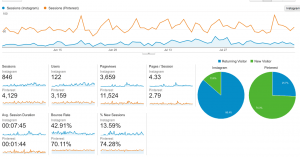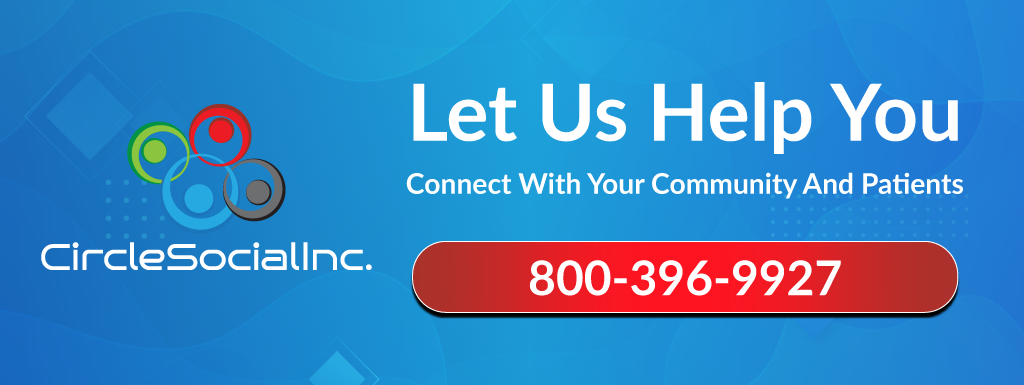How we drove 125 weekly customers via Instagram
Who Is Our Client? Who Is Their Customer?
Our client, Melinda Wood Designs, wanted more sales. As an e-commerce business hosted on Etsy, that meant driving and converting web traffic as their primary means of both marketing and sales.
The first thing we do with all of our clients is take time to learn about their business and their customers. This gives us a starting point to identify and find audiences.
We learned that their customers were largely women either in college or fresh out, possibly newly married or with a newborn. They wanted to be able to decorate their houses according to unique styles and current fashion, but needed something very economical.
Choosing the Right Platforms
Melinda Wood Designs sells printable art at $7 an image. That means that paid advertisements were out. Neither Facebook or Google pay-per-click would be good options as the customer acquisition cost would simply be too high. We needed to grow fully organic communities, which is much, much harder.
Any kind of content was also out as Etsy does not allow space for extraneous postings outside of product offerings. So we’d already narrowed down the field of possible avenues for growth.
The product was very visual, which signaled Pinterest and Instagram as good choices. In addition, the Etsy community was very active on Twitter. They only had enough budget to run one platform, so we needed to quickly determine which platform would deliver the greatest growth and ROI.
Let the Testing Begin
We started testing the waters and quickly determined that Twitter was out. While there existed a huge seller community on Twitter, it was not cohesive, most had no clue what they were doing, and there were no community of customers.
We would literally see Etsy accounts with tens of thousands of posts, maybe 100 followers, and, no sales on their sites. We even checked out the chats like #shoppershour and #etsycraft, often great places to build communities of customers, but found only sellers frantically posting links to their products and not a single customer.
Then There Were 2
That left Pinterest and Instagram. There had been a previous attempt to get Instagram set up, but they didn’t know what they were doing and had eventually left it. Instagram had a mere 2 followers and had been left alone since creating the account.
We fixed up the Pinterest account and started on Instagram. The key was to start trying to build communities that would not just drive traffic to the online shop, but drive actual sales as well.
As those of you out there that pin know, Pinterest is a slow growth platform, often taking 3 months or more for a pin to start seeing significant results, but, once they do, growth can be exponential. Instagram, on the other hand, can see some very quick results.
We ran both accounts for about a month and a half. Here’s what we saw after that time.

The Answers Are in the Data – Big Numbers Aren’t Everything
As you can see, Pinterest is in the orange and is driving far more traffic. From mid-June to end-of-July, Pinterest was driving over 4,129 sessions compared to a meager 846 through Instagram.
However, we have to remember that we don’t care about page visits as this is not an awareness campaign. We’re looking to drive actual sales ROI. So let’s take a deeper look.
While Pinterest has nearly 5 times the number of visits, look at their bounce rate and time on site. 70% leave right away and they are only spending an average of 1 minute 44 seconds on the site. In addition, look at the new vs. returning visitor pie chart. 74% of visitors are new, which means they’re often not coming back.
Now look at Instagram. They’ve got a much lower bounce rate of just under 43%. However, the time on site is amazing, 7 minutes and 45 seconds. These customers aren’t just interested, they love what they’re seeing and are most likely going through the checkout process. Unfortunately, Etsy analytics aren’t nearly as robust as Google Analytics, so we can’t track that accurately.
Now look at the new vs. returning. 86% of the customers are coming back week after week. That’s huge, especially as Melinda’s customers tend to make multiple purchases, so we can rightly assume that they are coming back to buy more.
At the time of this snap shot, we had just under 400 followers, so over 25% of followers were regularly visiting the page, spending at least 7 minutes on site, and making purchases. While many customers purchase more than one item, we can be conservative and say that they were buying $7 worth of art per month. This meant that Instagram alone was driving over $800 in sales a month, and that was with an incredibly small following of just 500 people.
We had found our growth lever. Was Pinterest still valuable? Certainly, but with the limited funds available, it made sense to focus the spend where they would see the best result for their investment.
It’s Not About Presence, It’s About Building Communities
Of course, it wasn’t just being on Instagram that was driving this behavior. We were extremely targeted in who we engaged with, what we posted, and which hashtags we were using. In addition, we spent considerable time on engagement. As you can see, it paid off significantly. We didn’t just have transactional customers, we had brand advocates.
These individuals were often so excited by the product that they would send us pictures of the work hanging in their homes for us to post and share. Social media is very much about building community and we were off to a great start that was already seeing serious financial results after just 3 months.

We got to know these women, they were all women, and we understood what they were excited about. This helped us to develop the right images, copy, and hashtags when posting.
Find the Right Lever, Then Leverage It for Results
All of this together resulted in a successful strategy for Melinda Wood Designs. You can’t be everywhere, you need to test and use data to determine which are the best avenues for growth and then you have to go all in to build the relationships with the right audiences and customers that will drive ROI for your business.


